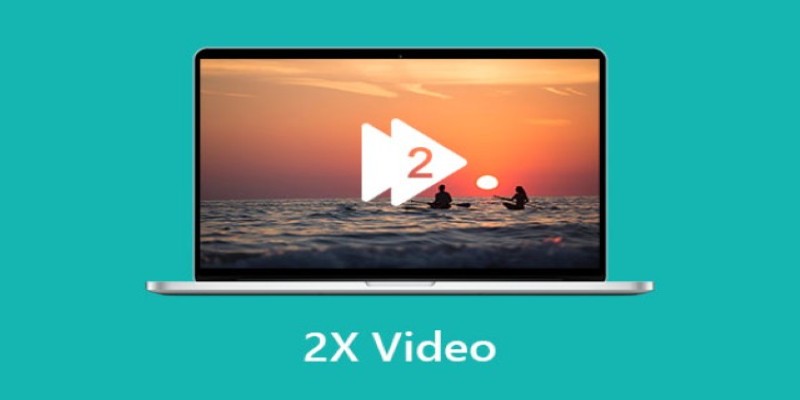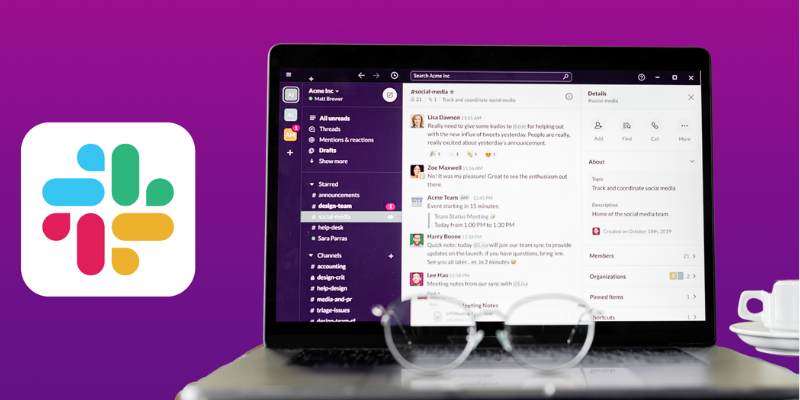The Overall Introduction to 2X Videos: Features, Usages, and Creating
Advertisement
We've all had moments when a video feels just a little too slow. Whether it's a tutorial, a lecture, or a podcast, there's always that temptation to hit the speed button and move things along. That's where 2X videos come in—not just as a time-saver but as a smarter way to watch, learn, and even create content. So, if you've ever wondered what exactly 2X videos are and why they've become so common, you're in the right place.
Let’s break it down: we’ll go over what makes them useful, how people actually use them, and how you can start creating your own without making the final product feel rushed or messy.
Key Features of 2X Videos That Make Them Work
To understand why 2X videos function so well, it helps to look at what actually goes into them. Playing a video faster is more than just hitting a speed toggle—it’s about balance.
Audio Clarity

The success of a 2X video depends heavily on the quality of the audio. If the sound is clear and the speaker has a steady pace, doubling the speed usually doesn’t distort the message. Tools like automatic pitch correction help keep the speaker’s voice from sounding unnatural or chipmunk-like, which used to be a common problem in earlier versions of speed control.
Visual Simplicity
Visually, the simpler the video, the better it performs at higher speeds. A complex video filled with rapid visuals or on-screen text can become overwhelming when sped up. But a clear visual layout—like a person talking to the camera, a screen recording, or a guided presentation—tends to remain watchable, even at double speed.
Segmented Structure
Good 2X content often has a built-in rhythm. Whether it’s clear section breaks, consistent chaptering, or logical transitions, these cues help guide the viewer even when everything moves twice as fast. Think of it like reading a well-formatted document—it flows more naturally when it’s broken into digestible parts.
Minimal Distractions
When creating a video meant for higher-speed viewing, unnecessary animations, transitions, and music can work against you. Clean editing with a focus on the core message is much more effective. The goal is to keep viewers focused on the main content without having to rewind or pause to catch up.
Everyday Uses of 2X Videos
2X playback isn’t limited to one audience—it’s used by people across different fields, and the reason is simple: it saves time while keeping the core message intact. Here’s where it comes in handy.
In Education
For students, 2X videos are practically a survival tool. Long lectures, explainer videos, and online courses can be compressed into shorter sessions without skipping anything important. Many learning platforms now support variable speed options, with 1.25X and 1.5X as softer alternatives before jumping to 2X.
For Content Review
Whether you're editing your own video or reviewing someone else’s, 2X helps you catch the flow without sitting through every second. It’s useful for proofreading narration, double-checking cuts, or verifying that the transitions still make sense.
In Work and Meetings
Recorded meetings and webinars can drag, especially when the content is straightforward, or the presenter has a slow delivery. Watching at double speed helps teams move faster without missing updates. This is especially helpful for large organizations where meeting recordings are often shared instead of attended live.
Entertainment and Podcasts
Yes, even in casual settings, people are using 2X playback. Long interviews, documentary-style YouTube videos, and commentary podcasts are frequently played at higher speeds, especially if the speaker has a clear tone and minimal background noise.
How to Create a 2X-Friendly Video

Now that watching at double speed is common, creators need to think about how to make content that holds up when viewed this way. The process isn’t too different from standard editing, but a few things help make it smoother and more enjoyable for your audience.
Script Tightly
Loose, casual speech tends to become harder to follow at faster speeds. If you're filming a video that people might watch at 2X, try working from a tighter script or at least using bullet points to keep your thoughts focused. Avoid rambling or long pauses.
Speak Clearly
You don’t need to speak slowly, but your pronunciation should be clean. Even with pitch correction, unclear speech becomes jumbled when sped up. If you naturally talk fast, aim for consistency more than slowness.
Cut the Fluff
Trim down parts of the video that don’t add anything meaningful. Long intros, unnecessary background music, or repeated points just waste time—especially when your viewers are already watching at a faster pace. Stay on topic and let your edits reflect that.
Test It Yourself
Before publishing, watch your own video at 2X speed and ask: does this still make sense? Are there parts where you’d need to pause or rewind? These moments are usually a sign that something needs simplifying or rewording.
Use Tools That Support Speed Editing
Some platforms let you preview edits in real time at different playback speeds. This helps catch anything that feels too rushed or awkward. You can also use captioning tools to support the content, making it easier to follow regardless of speed.
Final Thoughts
2X videos aren’t a trend—they’re now a routine part of how people learn, work, and watch. They don’t just shorten the viewing time; they help make long content more digestible. When made thoughtfully, these videos can hold just as much value—if not more—than traditional-length ones. Whether you're using them to catch up on a lecture or creating content that gets to the point faster, understanding how 2X works puts you in a good spot.
In the end, it’s not about rushing through things. It’s about trimming the extra and making space for what really matters.
On this page
Key Features of 2X Videos That Make Them Work Audio Clarity Visual Simplicity Segmented Structure Minimal Distractions Everyday Uses of 2X Videos In Education For Content Review In Work and Meetings Entertainment and Podcasts How to Create a 2X-Friendly Video Script Tightly Speak Clearly Cut the Fluff Test It Yourself Use Tools That Support Speed Editing Final ThoughtsAdvertisement
Related Articles

How to Schedule Mailchimp Campaigns Using Google Calendar: A Step-by-Step Guide

The Overall Introduction to 2X Videos: Features, Usages, and Creating

Discover 10 Smart TickTick Automation Ideas for Your Daily Workflow

7 Smart Ways Adobe Express AI Can Instantly Boost Your Design Productivity

How to Capture and Analyze Site Launches with Web Launch Recorder and Its Alternatives

How Can You Automatically Capture Leads from Facebook Lead Ads in RD Station?

What Are the Best Methods to Integrate Square into Your Business Apps?

Microsoft To-Do automation can simplify your daily planning

How to Use JustCall and ChatGPT for Smarter Customer Service?

Top 10 Slack Automation Ideas to Boost Workflow Efficiency

Explore How to Interact with Your Documents Using Google's AI-powered NotebookLM

 novityinfo
novityinfo